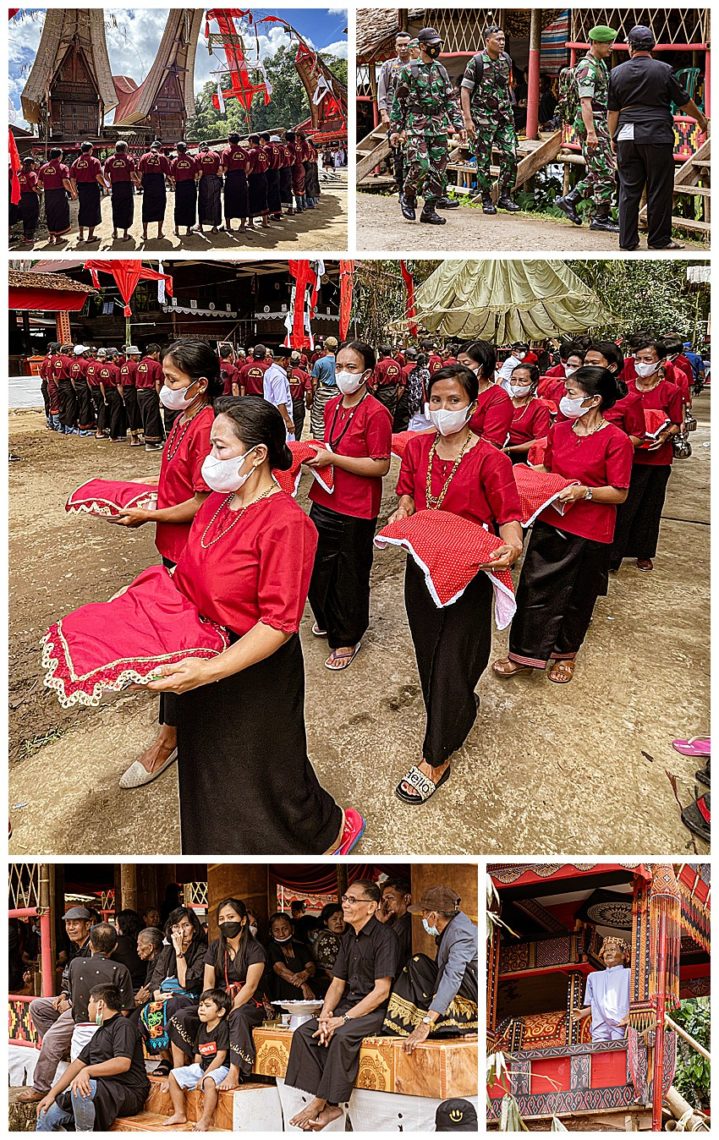
Toraja society is organized along a strict caste system. The person’s caste, or class, is inherited through the mother, and it is strictly forbidden for a woman to marry a man of lower class. The noble, or upper class, is considered to be descended from a person who descended from heaven. When someone of the upper class dies, an elaborate funeral is held, generally lasting 3-4 days. It includes the sacrificing of large numbers of water buffalo and pigs, and has the definite air of a festival.
Our first Torajan funeral blog post showed the first day of the funeral event, in which the water buffalo (aka bulls) are sacrificed. Our second such funeral was in the village of Lemo. Mr. Rantelemo had six children, and 35 buffalo were sacrificed to aid his ascension into heaven, along with hundreds of pigs.
A wooden effigy, or tau tau, was also created in his image, which resided over the festivities (lower-right). Such tau tau creations are only allowed for the upper caste. As with the first funeral we reported on, there were dozens of temporary structures built to shelter the guests (upper-left, with a line of men chanting in front of them). Family, politicians and police are invited to sit in the VIP section, with cushion chairs and provided snacks (upper right). A procession of offerings to the dead goes through the middle of the grounds (center — these people are returning with empty containers, from having presented their offerings).
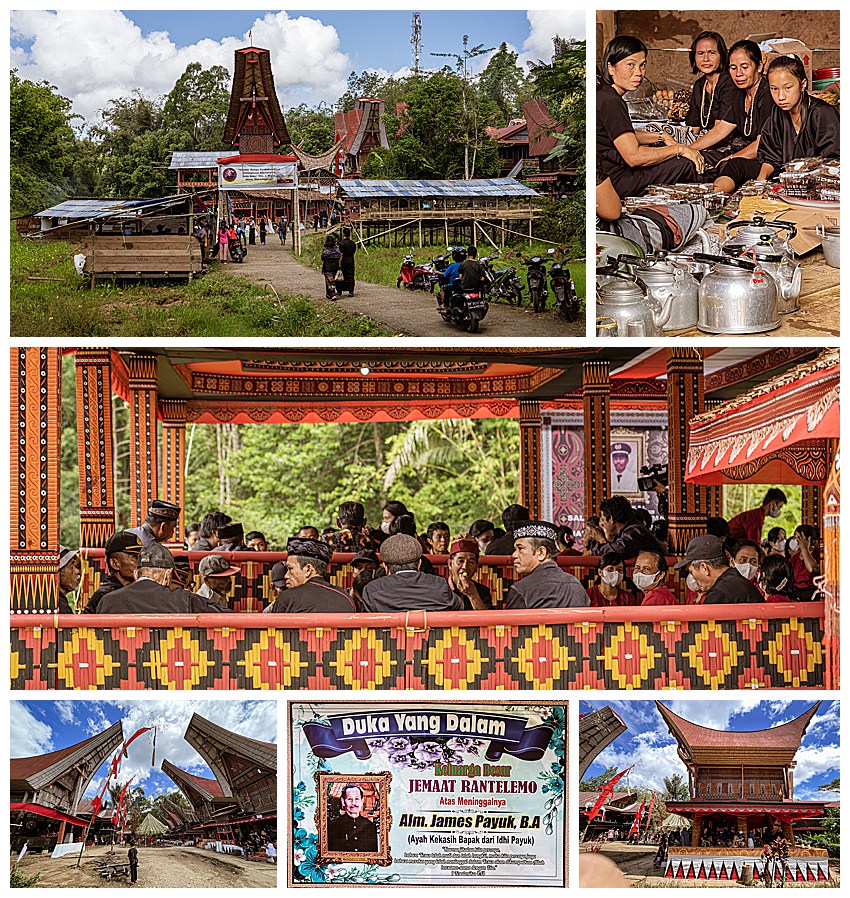
People arrive on foot or by vehicle all day long during the entire multi-day event (upper-left). The area has been turned into a temporary village, with more than 80 guest buildings (lower-left and lower-right)) to house the guests, who sit cross-legged on the bamboo platforms (middle). There are teams of women who prepare tea, coffee and food for the guests (top right)
The second day of an upper class funeral is primarily oriented around the sacrifice of pigs. Hundreds of pigs in this funeral. The pigs are typically purchased at a market set up specifically for this type of purpose, and frequently transported to the funeral grounds on the backs of motorcycles or trucks, as seen in the short 35 second video above.

Once the pigs are brought to the funeral grounds, they are laid out in a common area initially (lower-left). They are then carried, still trussed up and hung under bamboo poles, to the location where they will be killed (center, plus bottom-center and bottom-right).
There is quite a debt accounting process for these funerals. The size and number of each “gift” animal is tracked, and also taxed by the government. Sometimes groups of people will combine their efforts to make their donation. If a person cannot afford a personal contribution, he gives an IOU to someone else, who will then contribute the animals. These IOUs are considered sacrosanct, and are never forgiven, even being passed down to future generations if not repaid before the person passes.
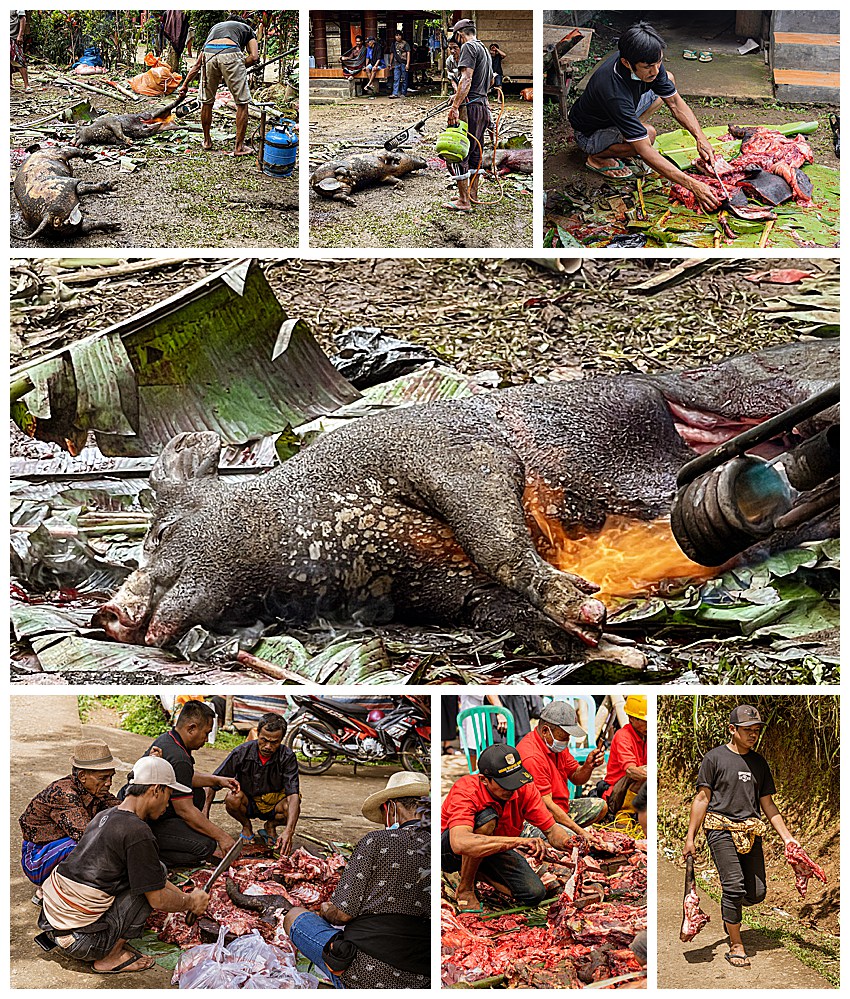
Once the pigs are quickly killed with a single sharp knife under their arm into the heart, the pigs are roasted with huge blow torches (center plus upper-left and upper-center). These torches allow the large animal to be fully cooked in just a few minutes.
Teams of butchers then set to work to carve and distribute the meat. Each attending guest will receive a portion of the meat, depending upon their caste, their closeness to the deceased, and their level of effort in the funeral. For example, the widow might get one large leg, and prime cuts of meat also given to those who dig out the grave, or carry the corpse to the final resting place. All of this is part of an elaborate bartering system, and in the end, every piece of the animal is either used or bartered. There is no waste of any sacrificed animal.
As each piece of meat is distributed, it is announced over a PA system, so that everyone knows the final allotment.
Watch this short 60 second video to see and hear the second day of this Torajan funeral. It will show you the procession of offerings, the transport of the pigs, followed by the cooking and then carving of the pigs.
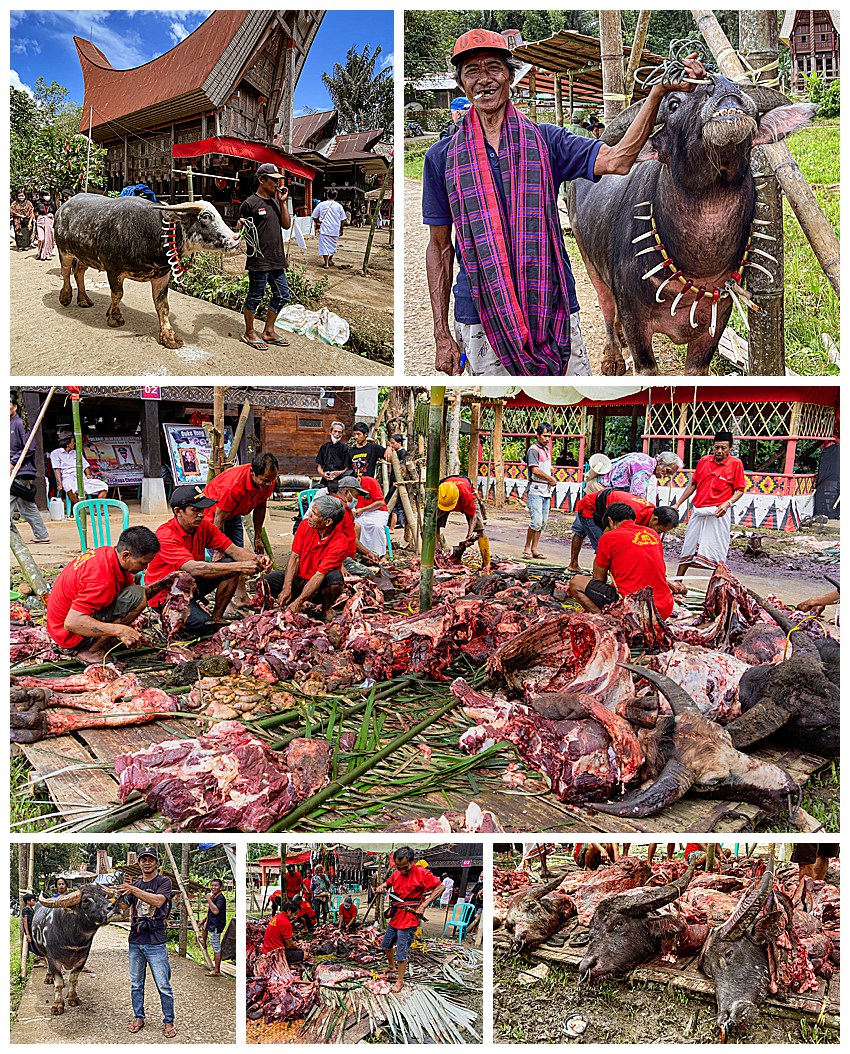
The first day of an Upper Class citizen’s funeral primarily involves taking the corpse of the deceased to a tower near heaven, and the sacrifice of water buffalo. The second day mostly revolves around the sacrifice of pigs. However, in very large funerals, such as this one, there are too many buffalo to manage in a single day. Thus, some of the bulls are held over for sacrifice, carving and distribution on the additional days (above).
As mentioned earlier, refrigeration is not common in the villages, so the meat is often smoked. The hides are hung to dry, to be used for leather. The horns are primarily used as decoration for the deceased family’s home or sold to make knives.
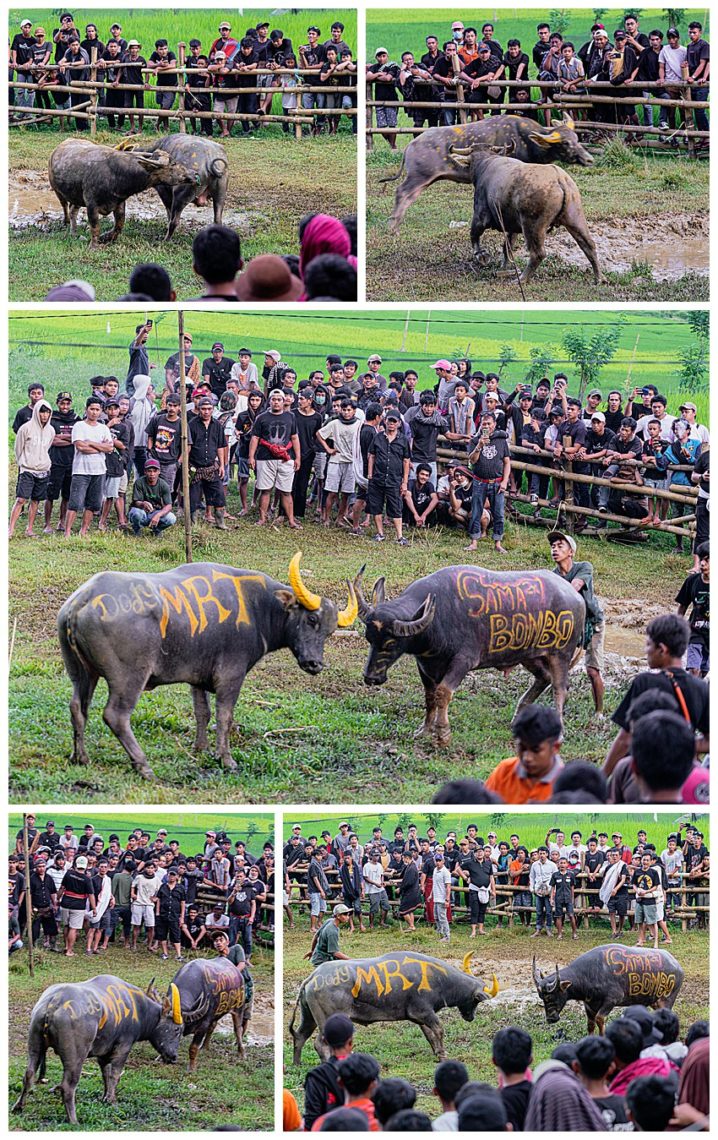
At the end of one of the days is often a bull fight. Timing depends on how tired the guests and participants are. We waited 4 hours until after the speeches ended, and the distribution process of the pig and buffalo meat completed. Then the fight began!
Well… sort of… Torajan bullfights are not like those in Latin America or Mexico. Here, there is no human on horseback harassing and finally killing the bull. Instead, in Torajan bullfights, two bulls are urged towards each other and encouraged to fight. Significant betting happens in the audience during these events.
These bulls did not want to have any part of it though. One of the bulls in the first bullfight simply turned and ran, after no more than a brief touch of the horns. The second pair were apparently pacifists. They simply refused to fight at all. No matter how hard their owners pushed, or water was thrown on them, they just turned, looked at the audience, and then started eating the grass. Somehow, I think they were the smartest animals in the group, and the real winners in the end… ☺
Watch this short 90 second clip as two bullfights start and end. This is not the bullfight you probably thought of, from Latin American cultures.